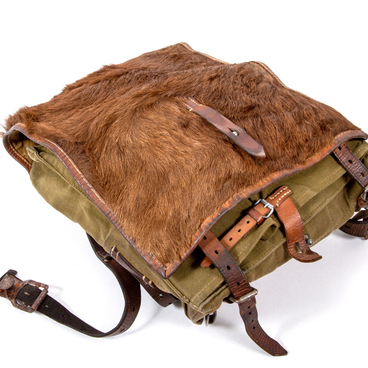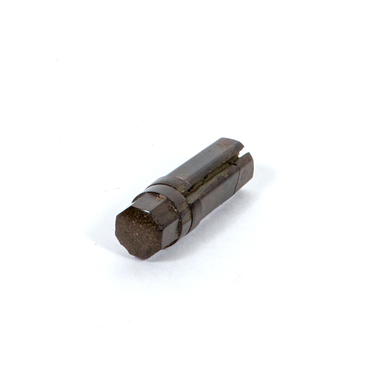German soldiers began using pocket lamps for military purposes back in the First World War. They turned on the light mainly at night to see the area. In addition, soldiers could maintain communication between units using light signals in poor visibility.
Before the Second World War, every soldier of the Wehrmacht received a pocket lamp. With the outbreak of war, the economic situation gradually deteriorated. The troops were supplied with pocket lamps selectively, depending on their combat missions and climate conditions.
The standard field pocket lamp Feldtaschen Lampe was included in the Wehrmacht special equipment. It had a rectangular flat body. A circular lens on the front side was on the bottom of the pocket lamp. Moreover, there were three cells for plastic color filters above it, which were used to switch to blue, red, or green. Thus, soldiers could send light signals. The color filters were pulled out with sliding pins of the corresponding color. A large button was installed on top to turn the light on and off.
Loops were installed at the top and bottom sides of the pocket lamp to attach it to the uniform. The upper side was attached to an epaulet and the lower one — to a button of the breast pocket.
A retroreflector was included in some pocket lamp kits; it was also called a ‘blackout curtain’. It directed the light at the soldier’s feet without revealing its owner.
Since the main light bulb could burn out at any moment, a spare one was placed in a special holder inside the pocket lamp so that the soldier would not waste time looking for it.
The pocket lamp ran on batteries. The Wehrmacht equipment also had autonomous pocket lamps that ran on a mini-generator. However, they could not emit short signals for communication purposes and they buzzed loudly during operation. Advance guards did not use them, but such pocket lamps came in handy in mountainous areas, where supply shortages could last for a long time.
Officers, non-commissioned officers, and many privates used captured or commercial models in addition to the standard pocket lamps. The most common brands were Pertrix, Wif focus, Hawe, Crone, and Daimon.
Before the Second World War, every soldier of the Wehrmacht received a pocket lamp. With the outbreak of war, the economic situation gradually deteriorated. The troops were supplied with pocket lamps selectively, depending on their combat missions and climate conditions.
The standard field pocket lamp Feldtaschen Lampe was included in the Wehrmacht special equipment. It had a rectangular flat body. A circular lens on the front side was on the bottom of the pocket lamp. Moreover, there were three cells for plastic color filters above it, which were used to switch to blue, red, or green. Thus, soldiers could send light signals. The color filters were pulled out with sliding pins of the corresponding color. A large button was installed on top to turn the light on and off.
Loops were installed at the top and bottom sides of the pocket lamp to attach it to the uniform. The upper side was attached to an epaulet and the lower one — to a button of the breast pocket.
A retroreflector was included in some pocket lamp kits; it was also called a ‘blackout curtain’. It directed the light at the soldier’s feet without revealing its owner.
Since the main light bulb could burn out at any moment, a spare one was placed in a special holder inside the pocket lamp so that the soldier would not waste time looking for it.
The pocket lamp ran on batteries. The Wehrmacht equipment also had autonomous pocket lamps that ran on a mini-generator. However, they could not emit short signals for communication purposes and they buzzed loudly during operation. Advance guards did not use them, but such pocket lamps came in handy in mountainous areas, where supply shortages could last for a long time.
Officers, non-commissioned officers, and many privates used captured or commercial models in addition to the standard pocket lamps. The most common brands were Pertrix, Wif focus, Hawe, Crone, and Daimon.

